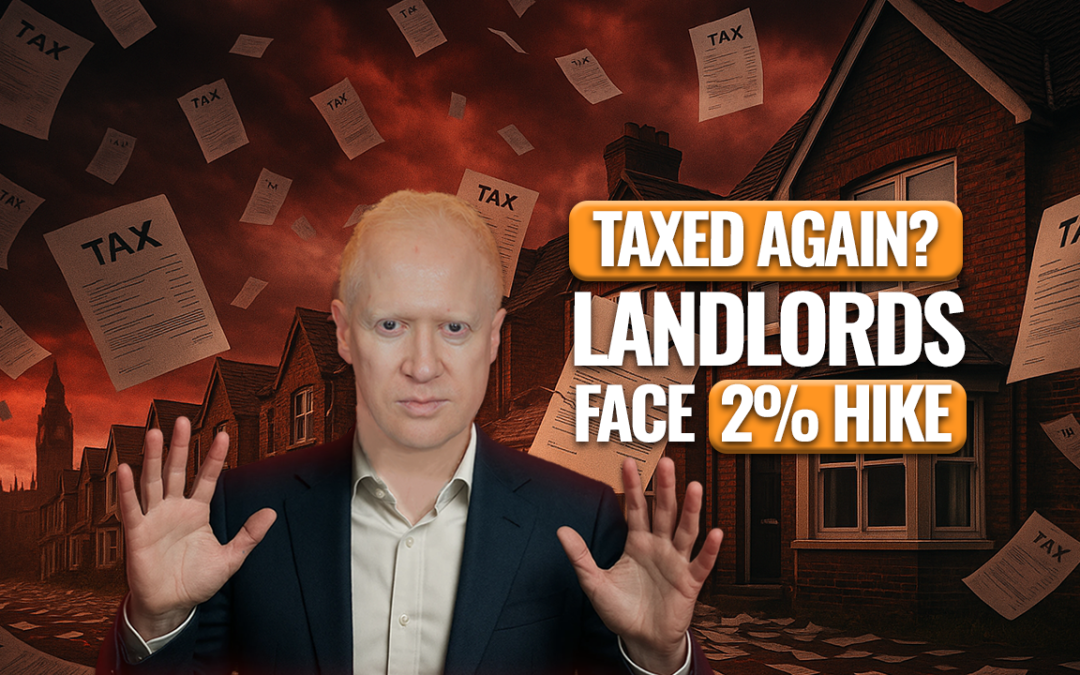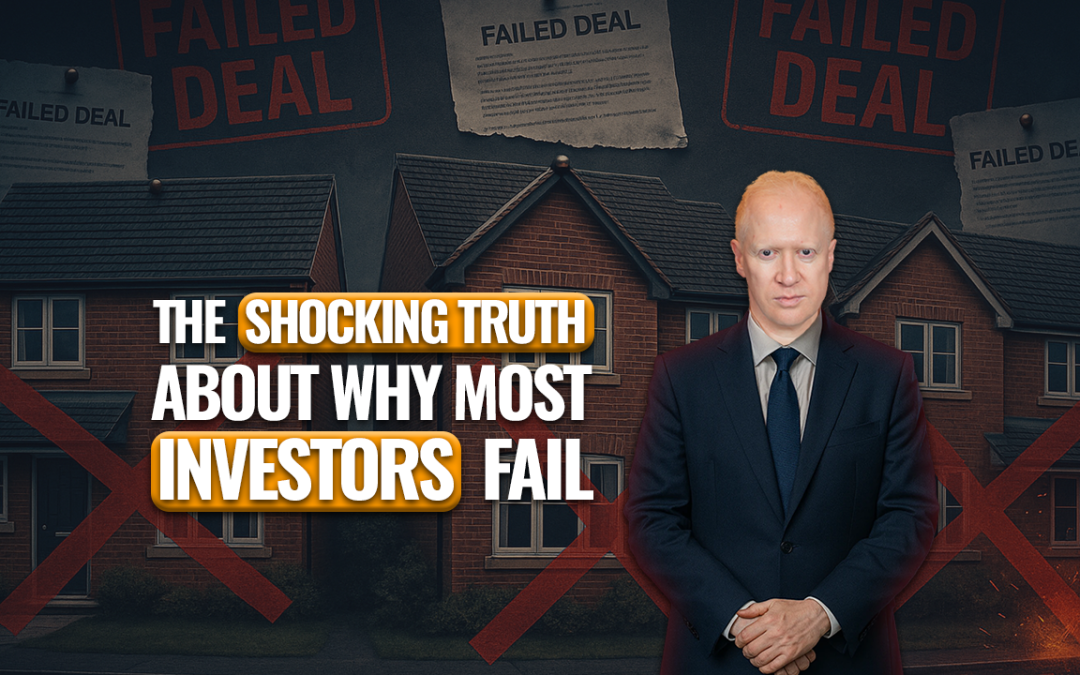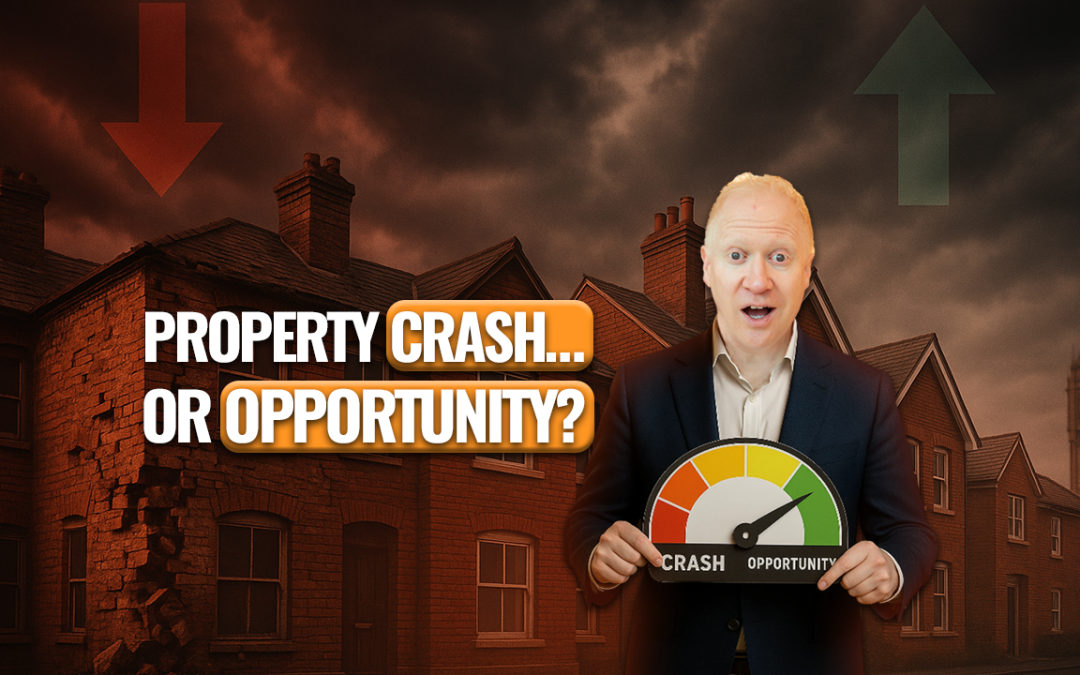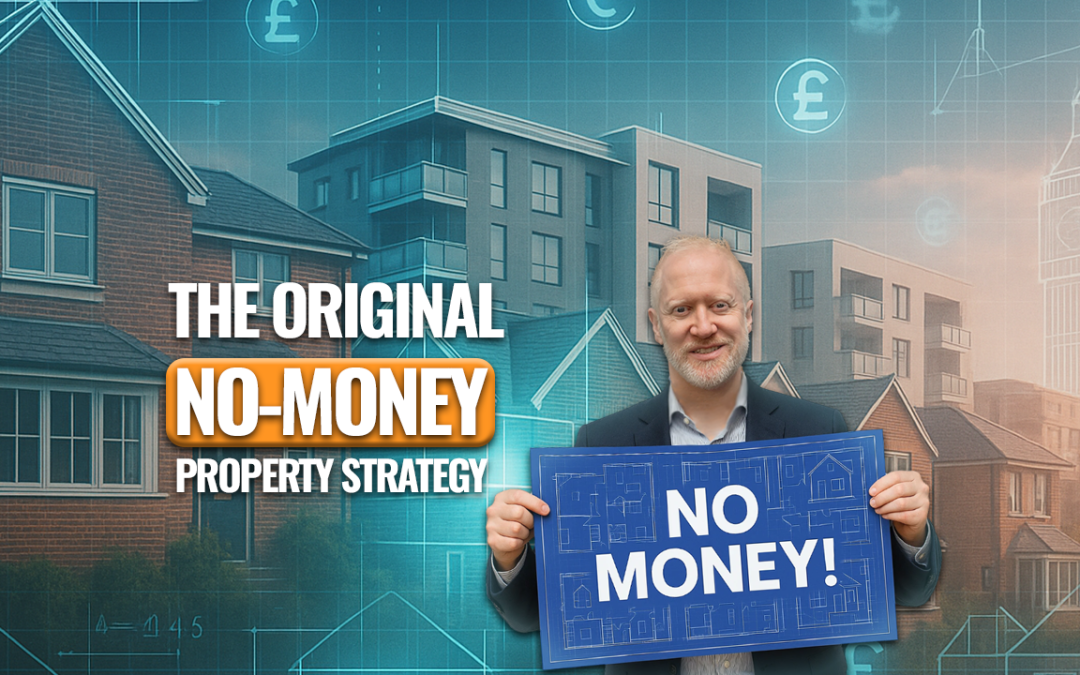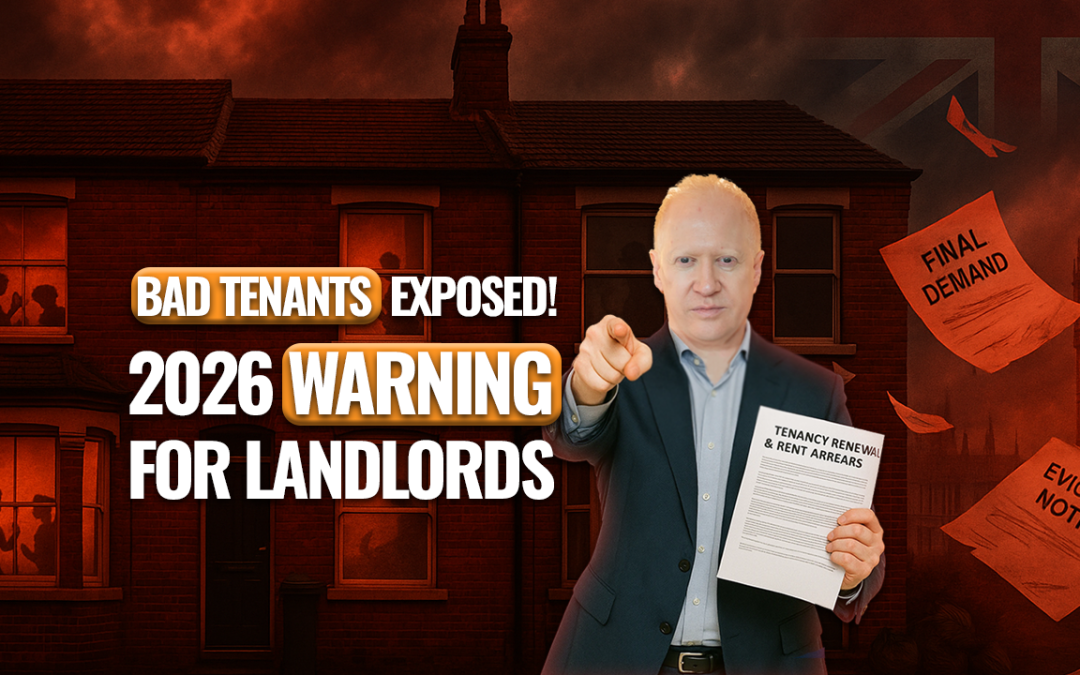In this blog, I’m going to share with you a powerful concept, which I believe will make you a more successful investor if you fully embrace it. I’m sharing this because I meet a lot of people who I don’t believe are reaching their full potential with their investing. They’re just not aware of this concept, and this is something that we normally share at my Strategy Implementation Live event, which is in March. However, I want to share it with you today as I think it would help you to become more successful.
So, the concept is called SOI, which stands for Speed of Implementation. If you use this, it will make you more successful in life. The concept is, when you learn something, you should do it straight away. You should implement it straight away. Or when you have an idea, rather than overthinking it, you should just do it straight away. You see, the problem is most people get distracted or they’re just too busy in life, and so they fail to take the necessary action. Obviously, the success you achieve, the results you’re getting in life, are directly related to the actions that you take.
The Importance of Decisiveness
Successful people are generally decisive people. They make decisions. They’re quick to decide, and they’re often slow to change their mind once they’ve decided. Whereas unsuccessful people often don’t commit. They just don’t make a decision, and when they do, they take a long time to decide, and often they’re quick to change their minds. So, in property, you need to be decisive. When you see a great property deal, you need to move quickly, otherwise someone else will come and buy it before you. By gaining specialist knowledge, this will give you certainty and confidence so that you can move quickly. I’m pretty sure that you, like me, have had opportunities that you’ve missed out on in the past, because you haven’t moved quick enough or because you haven’t taken necessary action.

Taking Direct Action With Property
I’m sure you will have seen a property in your local area, close to where you live or work that maybe is abandoned or derelict or empty, and there’s an opportunity to take that property, renovate it, and add value and make an amazing project. Yet, for some reason, even though you maybe had the idea around it, thinking, I wonder who owns that, what could be done with it, you probably didn’t take any action, and I know that, because I’m the same. When I ask people, pretty much everyone has had an experience like this.
There are opportunities everywhere, but it’s frustrating when maybe six or nine months later, we see scaffolding going up around it, and boarding, as if someone has bought it. Someone is doing something to it, and they’re probably going to make hundreds of thousands of pounds, and that could have been you or me, but we just didn’t do it. When you see something, when you see an opportunity, you need to be taking action there and then.
Maybe you’ve driven past a property that’s perfect for you, and you’ve seen a for sale sign outside the property or a to let sign, and you thought, I must call the agent. You might’ve even written the number down or taken a picture and thought, I’ll do it later, but then you just didn’t get around to doing it. Later on, you find someone else has beaten you to it, and they’ve got that great deal. I’m sure you will have some experiences like this, and it’s because you didn’t utilise the Speed of Implementation.
“When you see something, when you see an opportunity, you need to be taking action there and then.”
Five Second Rule
I’ve got two very simple techniques that I want to share with you that work in conjunction with this concept. So, the first one is from a book by Mel Robbins called “The Five Second Rule”. It’s a great book. I highly recommend you get the book, and the concept is that we all have good ideas, and very often, we know what we actually should do, but then, for some reason, we talk ourselves out of it. We think about it, we overanalyze it, and then we fail to take action. Instead, Mel suggests what you should do if you have an idea and just do it straight away. The way you do that is you have the thought, and then you say to yourself, 5, 4, 3, 2, 1, then you just do it. By counting down from five to one, you’re occupying your mind and the thoughts that would normally come in that might sabotage you taking action are just not there. A great example is, when you get up in the morning, and maybe you think, okay, well, I’m going to get up, I’m going to go for a run. That’s a great thing to do, or do some exercise, but then your mind starts kicking and saying, oh, well, you know what? I didn’t get as much sleep as I wanted last night and the bed’s really cosy, and maybe it’d be better for me to just have another 10 minutes in bed, and that will be better for me. We talk ourselves out of things.
Whereas, if you said, I need to get up and go do some exercise now, and then, 5, 4, 3, 2, 1, and just pull the cover and jump out of bed, you’re more likely to actually do it. You can also enhance the chances of you taking action. For example, if you’re going to go and do some exercise and you’re going to put your shorts and t-shirts and trainers on, having those by the side of the bed, so as soon as you can get up, you can get dressed and get into the right kind of state is going to enhance your chances of actually doing it and taking action. So, remember the Mel Robbins Five Second Rule.
Scheduled Focus Time
The next tip I want to share with you is about using scheduled focus time. Now, I love using action lists. I’ve got lists of things, I need to write them down, but unfortunately, action lists don’t work unless you do the most important tasks first. Very often, we’ll look at an action list, we’ll tick off the easy or the quick wins just to feel good, but guess what? More and more things go onto the action list, and really, an action list should be a priority list instead. So, these are things we need to do, but let’s prioritise them and let’s put the most important thing first. So, another great book recommendation for you is Brian Tracy, who’s one of my favourite authors. One of his books is called “Eat That Frog”, and it’s all about doing the things you don’t want to do first, and it’s about looking at the tasks you have and prioritising, so here’s a question for you. If you get your action list out and you look at that list and say, okay, if I could only do one thing from this action list today, what’s the most important thing that I should do? The thing that’s going to move me forward the most, have the biggest impact? That is the one thing you should do first. Focus on that and don’t do anything else until you’ve done that one thing. Then you move on to the second most important thing. So if you could do two things in a day, what would the second most important thing be? If you use this to plan your day and you focus, use your action list to make sure your priorities at work are the right things, you’ll be amazed at how much you could achieve moving forward. Now, obviously you need to put time in your diary to actually get these things done.
One of my coaches shared with me the concept of focus time. Now, again, we are all busy people. There are lots of things to do. You’ll never do all of the things on your action list, but let’s get the most important things done. So, what we can do is schedule some time into your diary, whether you have a paper one, or digital one, or whatever it is, get a diary and schedule in time when you’re actually going to be working on your project, whatever that might be. If you have already organised your action list into priorities, when you have that time, you’re not then trying to work at, oh, what should I do now? Oh, let me just check some email, let me just do this. No, you’re really 100% focused on the most important task that you need to do. Now, these focus time sessions, they can be as long or as short as you want. I think you probably want at least half an hour to give you some time to get into whatever you’re doing, and actually, 55 minutes seems to work for many people as a focused time period.

After that 55 minutes of real focused energy where you’ve turned your phone off, you’ve got no email alerts or no WhatsApp messages coming through, you’re just focusing on that task, not doing anything else, you need to take a little bit of a mental break. Maybe you have a little bit of stretch, you have a walk around, get yourself a glass of water or a cup of tea, you know, maybe do some meditation, and then, if you want, you can go into another 60 or 55-minute focus time. Now, when I first heard this, I said to my coach, “This is brilliant. I’m going to put on three 60-minute sessions each day.” If you did that, by the way, you would achieve so much more. In fact, one really focused 55-minute session will probably achieve more than most people would in a day, if you’re really, really focused on it. My coach said to me, “Simon, that’s great. I love the enthusiasm, but realistically, that’s not going to happen. You know, things are going to get the way. You’re not going to protect those sacred focus sessions.”
He then suggested “Look, just start with one session, maybe every couple of days, and that’s very manageable, and you could make sure that you commit to actually get that done.” He said, “Once you then see the results and how much you actually achieve in that session, then you might want to start introducing one session a day. If that goes really well, you can introduce maybe two sessions.” If you did two sessions like this every day, you could get the majority of your work done in just a couple of hours. It’s the 80/20 rule, you know, 80% of what you’re doing doesn’t really help that much. It’s the 20% that actually makes the real difference. So, I suggest, I invite you to start putting some scheduled focus time slots into your diary, you can then start moving forward and taking the action that you really need to take. Make sure you prioritise your action list before that session, so as soon as it starts, you’re ready to go, and, you know, make sure there are no distractions around you. Make sure a nice clear desk. You don’t want anything that could take your mind off the task at hand, which is focusing on the most important thing that you have to do from your action list.
So, I hope that helps. You know, becoming more focused, becoming more decisive, taking action in the moment is going to make you a more successful person. The caveat to that, of course, is when you’re investing in property, you always want to do your due diligence and your research. But that should not be something that takes you days or weeks. When you know how to stack a deal, to work out the cash flow and the return on investment, you can actually do that very, very quickly.
In previous blogs I have spoken about the seven steps to stack a deal. Once you know how to do that, it shouldn’t take a long time. So, you see an opportunity, you take action, you make the call, you stack the numbers. If there’s a good deal, do the deal. Now, for that to happen, you need to know what criteria works for you. It’s going to be different for everyone, but get that clarity, get the focus, and I promise you, you will be a more successful investor.
Until next time, remember to Invest with knowledge and Invest with skill.


